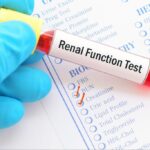While a person is exercising and feels pain due to the lack of blood supply to the leg muscles, they are suffering from Claudication. Blockages caused due to atherosclerosis, the build-up of plaque inside the arteries of the legs, is a sign of the issue. A person suffering from it can also suffer from PAD or other vascular diseases, which could eventually be a serious health concern.
Symptoms of Claudication
Various problems can be observed during exercise, when your muscles need excess of blood, due to claudication. These problems include;
⦁ Cramping
⦁ Numbness
⦁ Pain
⦁ Tingling
⦁ Weakness
Legs are the usual location of these symptoms and usually stop once you are not moving. This can be a sign of Peripheral Arterial Disease. However, many other symptoms are related to it, which include;
A burning or aching sensation, cold feet, and foot sores. Furthermore, the person can also observe shiny or blotchy leg or foot skin, hair loss on the leg, or impotence in men. The weakening of arms and legs is also a symptom of it.
Causes of Claudication
Plaque can cause the arteries to be narrowed or blocked, which eventually leads to peripheral arterial disease. There are various conditions that lead toward claudication, such as;
⦁ Aneurysm in your leg or belly, the aneurysm is a bulging of an artery.
⦁ Peripheral Neuropathy is commonly known as damaged nerves.
⦁ Spinal Stenosis is narrowed spinal canal.
However, claudication is a higher risk for a person, who is aged above 50 if a man or 60 if a woman. Being obese can also pose a greater threat to the person. If a person has a family history of PAD, heart disease, or claudication, they are also subject to greater risk. Diabetes, High BP, and high cholesterol, along with the lack of exercise, can lead to claudication.




